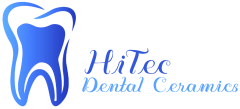In the ever-evolving landscape of dental technology, intraoral scanners have emerged as a transformative tool for dental practices. These digital devices capture accurate 3D images of patients’ teeth and oral structures, streamlining various aspects of dental procedures. While the primary purpose of intraoral scanners is to enhance patient care and treatment outcomes, they also play a vital role in reducing overhead costs for dental practices. This article explores how integrating an intraoral scanner can lead to significant savings and operational efficiencies.
Understanding Overhead in Dental Practices
Before delving into the benefits of intraoral scanners, it’s essential to understand what constitutes overhead in a dental practice. Overhead costs include staff salaries, rent, utilities, equipment maintenance, supplies, lab fees, and more. High overhead can strain a practice’s finances and hinder growth. By leveraging technology like intraoral scanners, practices can reduce these costs while simultaneously enhancing the patient experience.
How Intraoral Scanners Reduce Overhead
Minimizing Material Costs: Traditional impressions often require the use of impression materials, which can be costly and wasteful. In contrast, intraoral scanners eliminate the need for these materials, significantly reducing supply costs over time. Additionally, digital impressions can be stored and reused, further decreasing material expenses.
Reducing Lab Fees: Many intraoral scanners come with software that allows for direct transmission of digital impressions to dental labs. This can eliminate or reduce the cost of traditional lab fees associated with physical impressions. Moreover, digital submissions can lead to faster turnaround times, helping practices serve patients more efficiently.
Decreasing Chair Time: The use of an intraoral scanner can significantly reduce the time spent on taking impressions. Traditional impression techniques often involve multiple steps and can be time-consuming, leading to longer chair times. With intraoral scanning, the process is streamlined, allowing dentists to see more patients in a day and increasing practice revenue.
Improving Workflow Efficiency: Intraoral scanners can enhance the overall workflow in a dental practice. By integrating digital scanning with practice management software, dental teams can streamline patient records, treatment planning, and communication with labs. This increased efficiency can reduce staffing needs and administrative overhead.
Enhancing Patient Satisfaction: Happy patients are more likely to return for future treatments and recommend the practice to others. Intraoral scanners provide a more comfortable and less invasive experience than traditional impression methods. By reducing the discomfort and time associated with impressions, practices can improve patient retention, ultimately leading to increased revenue.
Facilitating Comprehensive Treatment Planning: With detailed 3D scans, dentists can better visualize and plan comprehensive treatments. This capability can lead to more accurate diagnoses and treatment plans, reducing the likelihood of costly adjustments or remakes due to errors in traditional impressions.
Maintaining Competitive Edge: As patients become more informed and discerning, they seek practices that utilize the latest technology. By adopting intraoral scanners, dental practices position themselves as modern and patient-centered, attracting more patients and potentially increasing profitability.
Considerations for Implementation
While the benefits of intraoral scanners are clear, it’s essential for practices to consider several factors before implementation:
– Initial Investment: The upfront cost of purchasing an intraoral scanner can be substantial. Practices should weigh this investment against the potential long-term savings and increased revenue generated through improved efficiency and patient satisfaction.
– Choosing the Right Scanner: Not all intraoral scanners are created equal. Practices should evaluate different models based on their specific needs, including ease of use, software compatibility, and support services. The cost of a intraoral scanner ranges from about $7,000 to about $25,000 with an average of about $16,000. Companies such as Align Technology offer their Itero level scanners for a low as $8,000.
– Return on Investment: While smaller practices may hesitate to purchase in an intraoral scanner, the long-term savings make it a worthwhile investment.
Here is how the savings are achieved:
Material costs and shipping savings: The material costs of a typical impression is about $30. A successful practice can generate an average of 384 impressions a year. This amounts to a savings of $8,448 per year in impression materials.
Time savings: Some experts estimate the impression process takes about 18 minutes and a dentist’s time is estimated to be valued at $5.20 a minute. Using an intraoral scanner takes between 2 to 5 minutes once the practitioner is skilled at using the tool. This is a minimal savings of at least 13 minutes. This leads to a realized savings of about $67 per impression or over $25,000 in time savings annually.
That’s over $33,000 in total annual savings! Based on these calculations, a busy practice will save enough to overcome the initial investment in the scanner in less than 6 months!
– Training and Integration: Staff training is crucial for maximizing the benefits of an intraoral scanner. Ensuring that the dental team is proficient in using the technology will help avoid disruptions and ensure a smooth transition.
Conclusion
Intraoral scanners represent a significant advancement in dental technology, providing numerous benefits that extend beyond improved patient care. By reducing material costs, decreasing lab fees, enhancing workflow efficiency, and ultimately leading to better patient experiences, these devices can play a pivotal role in lowering overhead costs for dental practices. For practitioners looking to maintain a competitive edge while ensuring their financial health, investing in an intraoral scanner could be a game-changing decision. Embracing this technology not only improves the bottom line but also elevates the standard of care delivered to patients, paving the way for a thriving dental practice.
Sources:
- https://www.yourdentistryguide.com/digital-impressions/
- https://www.ada.org/-/media/project/ada-organization/ada/ada-org/files/resources/research/hpi/dec2023_hpi_economic_outlook_dentistry_slides.pdf?rev=8fa65e0875ea4ef7b697d8dd93f3e76a&hash=ECE1B103D00CD46DD6BCF7308B59AC8D
- https://jada.ada.org/article/S0002-8177(21)00312-3/fulltext
- https://universadent.com/intraoral-scanner/
- https://www.dentsplysirona.com/en-us/discover/discover-by-topic/by-category/digital-dentistry/why-invest-in-an-intraoral-scanner.html
- https://dentalblog.3m.com/dental/do-you-know-the-true-dental-impression-material-cost/
- https://www.dentaleconomics.com/science-tech/article/16393647/time-is-money-in-impressioning
- https://www.3shape.com/en/digital-dentistry/digital-impressions

Great article